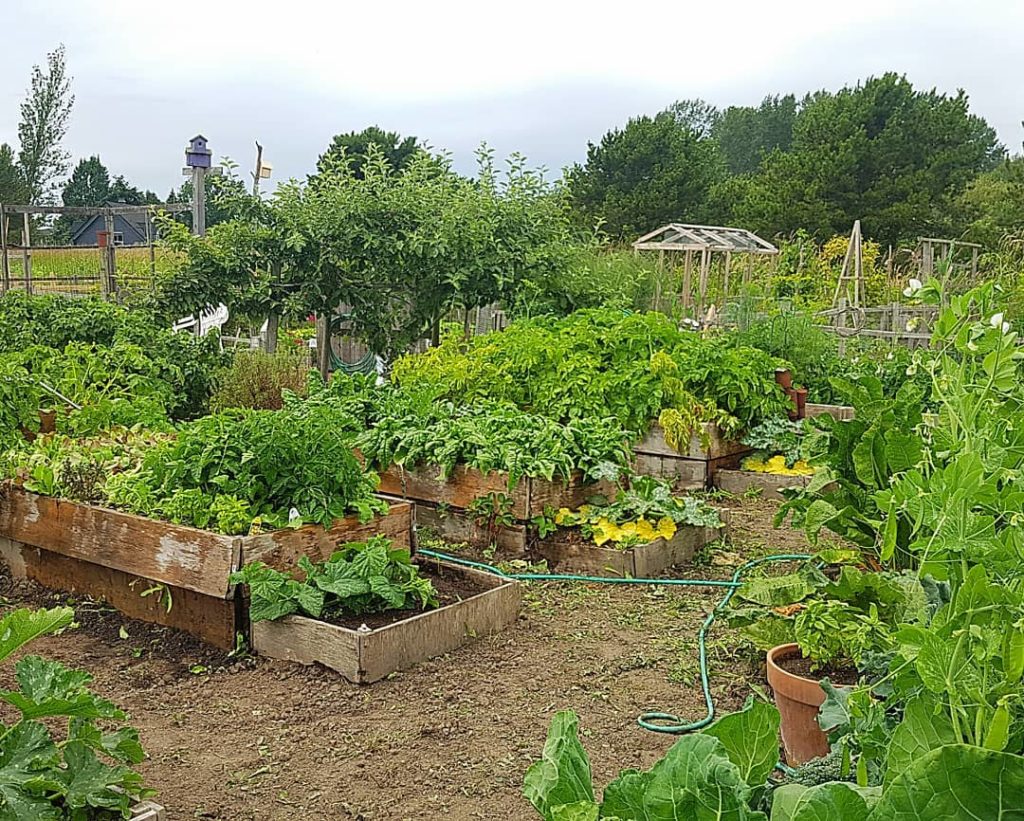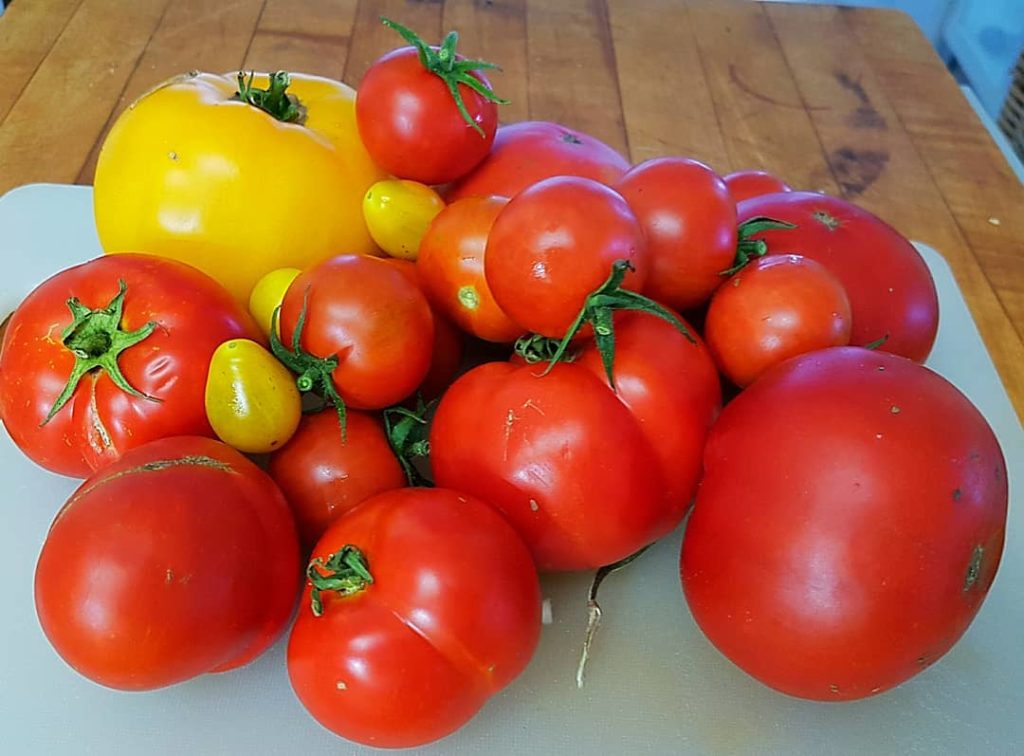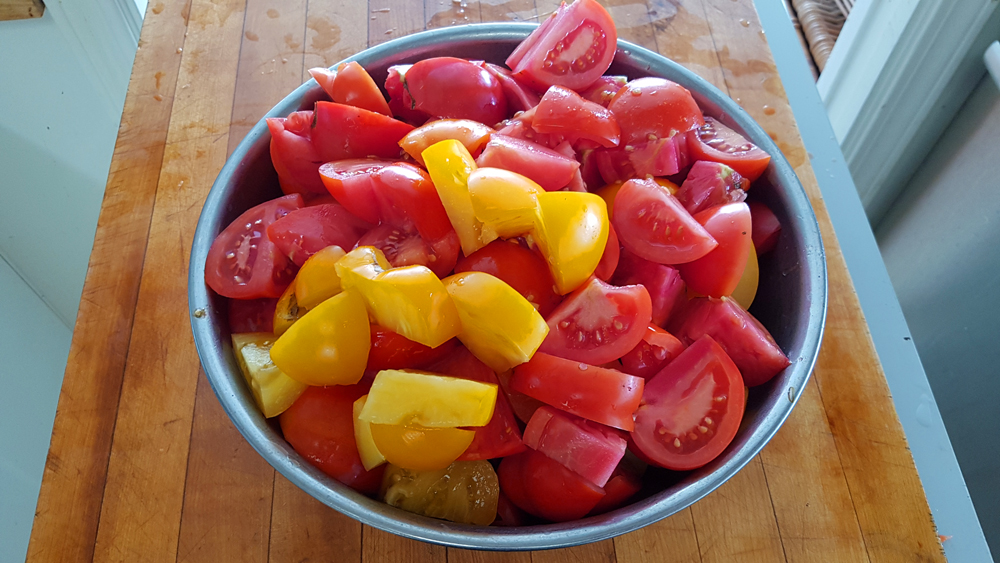
Man does not live by wine alone. Not even with beer to help him out. No, there are times in a fella’s life when he needs a garden to bring him peace and happiness.
The garden has been really productive this year. Between a stretch of good weather early on, a long dry summer and a new fertilizer regimen I’ve managed to harvest huge volumes of peas, zucchini blossoms and marrows, basil for days, cabbages, cauliflower, artichokes, cilantro, peppers, broccoli, carrots, spinach, currants, apples, et cetera, et cetera. Imagine the beauties you can make with this and the best puree food blender, great recipes, super easy and healthy.

There is one crop that often eludes me: tomatoes. We’re technically zone 8, but the garden is right on the water just off of Mud Bay in Crescent Beach. This means we get a lot of cool, damp nights in late summer, right at the moment when we need one last push of heat to finish ripening our tomatoes. This usually means blight, right when you’re hoping for a good crop.

The only two cures are 1) planting the earliest-ripening tomatoes you can find, and 2) good luck with the weather. This year we had both, and the tomatoes are coming in thick and fast–and ripe.


First things first, you gotta have some toasted tomato sandwiches.

But after a couple of dozen sandwiches (and so much bacon) with the tomatoes piling up, it was time to make some sauce.

The classic Italian pomodoro is quick tomato sauce that’s ready in less than half an hour, but it it uses canned Roma tomatoes, which are already very well-cooked during processing. For a sauce from fresh tomatoes you need a little more time and planning.
Step one, saute some onions and peppers until completely soft.

This takes a lot longer than cookbooks or internet recipes tell you. I’m not sure why everyone lies: “Cook until soft, 10 minutes or so.” No Debra, it’s more like a good 30-40 minutes to get onions thoroughly soft, and it’s crucial: if the onions aren’t soft before the tomatoes are added, the acid in the tomatoes will set the onions and they’ll stay disconcertingly firm no matter how long you cook the sauce. Olive oil, medium heat, lots of patience.
While they’re cooking down, cut up your tomatoes. They don’t have to be tiny, but you want to get them chunked up to expose their inner liquidity. Most recipes will tell you to remove the skins, but I can’t be bothered: they cook down to nothing, and I usually use this in a very rustic sauce (more on that below). If I was going to make it into tomato soup (easy, with a little cream and herbs) I’d put it through a blender and push it through a strainer. But I’m not, so I won’t, and this is what I got:

Once the onions are completely soft, add them to the pan.


The little brown things that look like Kalamata olives are actually black cherry tomatoes. They’re really bright tasting and very zippy and sweet. Even a few adds a lot of flavour to a sauce. The only other thing needed at this point is a a whole head of garlic chopped fine, and a healthy pinch of kosher salt–about a teaspoon. The salt at this point helps break down the tomatoes and bust cell membranes, releasing juice. It will need more salt before it’s used, but a pinch now is the way.

This has to cook down a long, long time, at least three hours. I was able to roast three batches of coffee, finish my business correspondence, edit an article I was working on, fight with a seagull and do some vacuuming while it cooked. You can tell it’s done when the clear liquid is reduced and the raw tomato taste is replaced by a sweet intensity of flavour.

Then it’s ready to eat or freeze: it’ll keep for about three months tightly sealed in a freezer. As a base tomato sauce it’s fantastic on pizza, in lasagna, or adapted to a soup or any number of others. But for me it shines best in a simple kjilkje. The food of my people, kjilkje is homemade noodles, usually served with bacon or sausage, a tomato sauce and lots of other Mennonites crowded around to eat vast plates of it and chase it down with hot, sweet tea.

This time I diced and fried some of my guanciale (Italian pork jowl bacon that I make) and topped the noodles with that, sauce, a bit of Parmigiano Reggiano and some fresh chopped basil.
That’s summer, right there.
